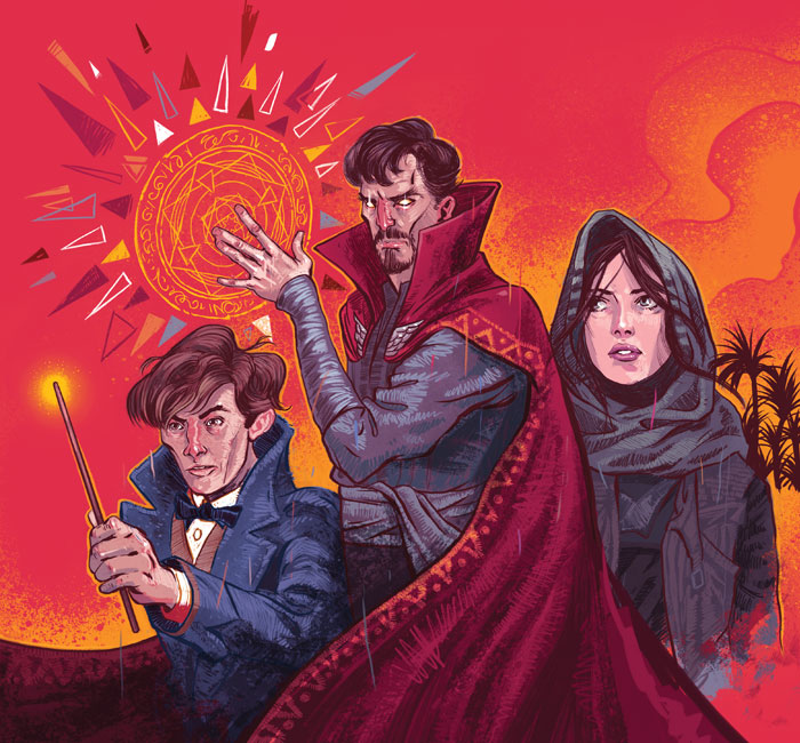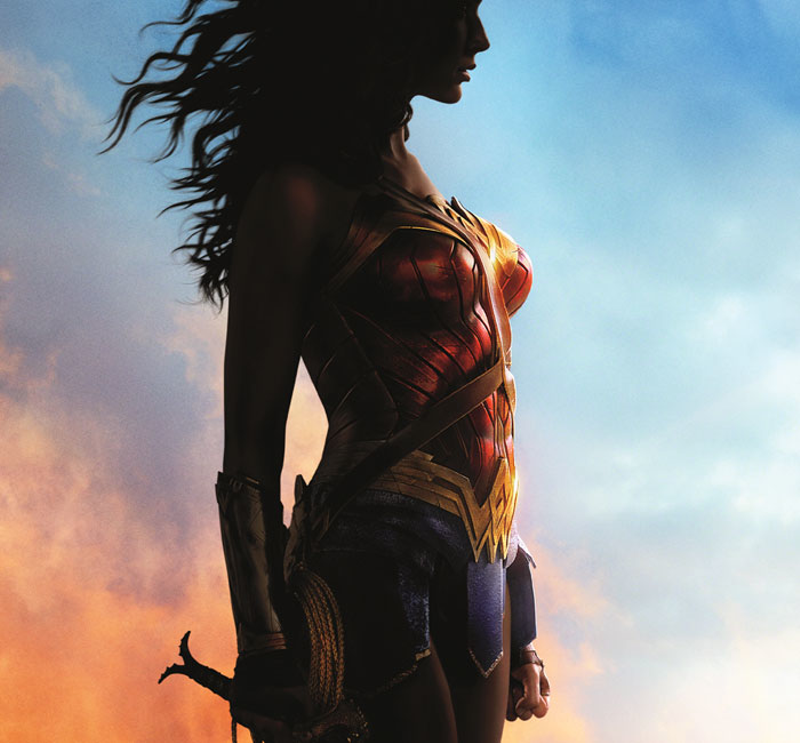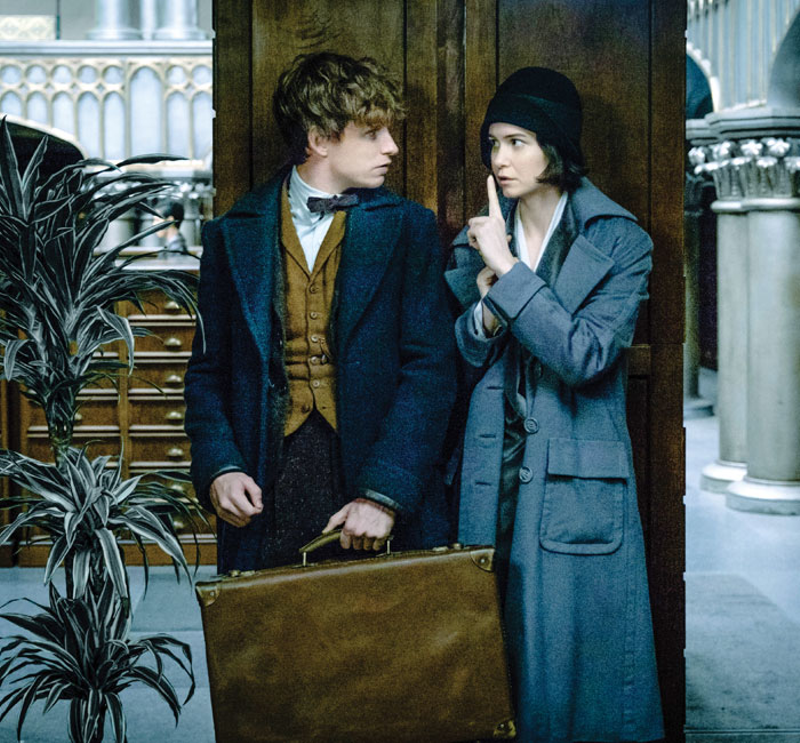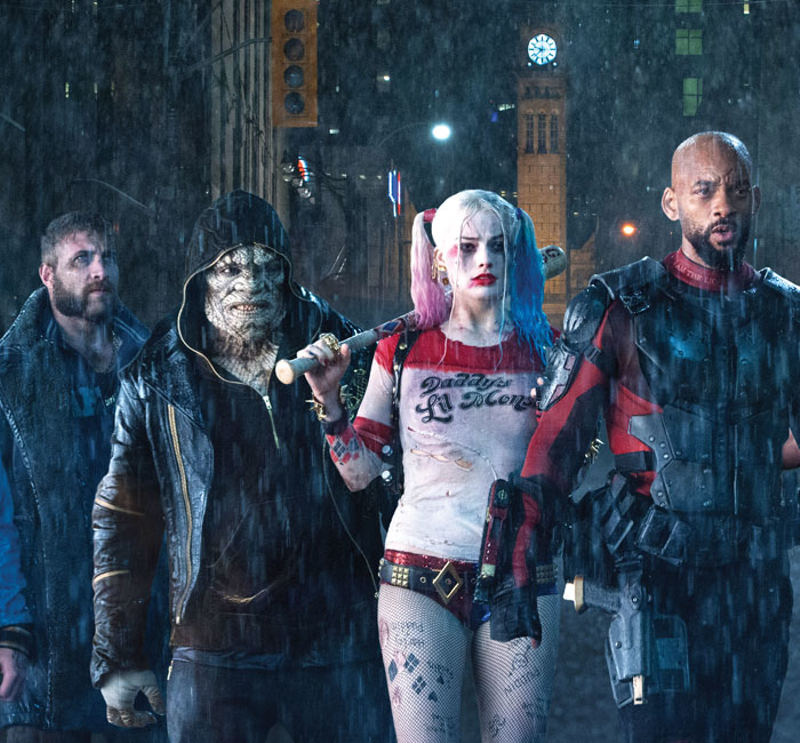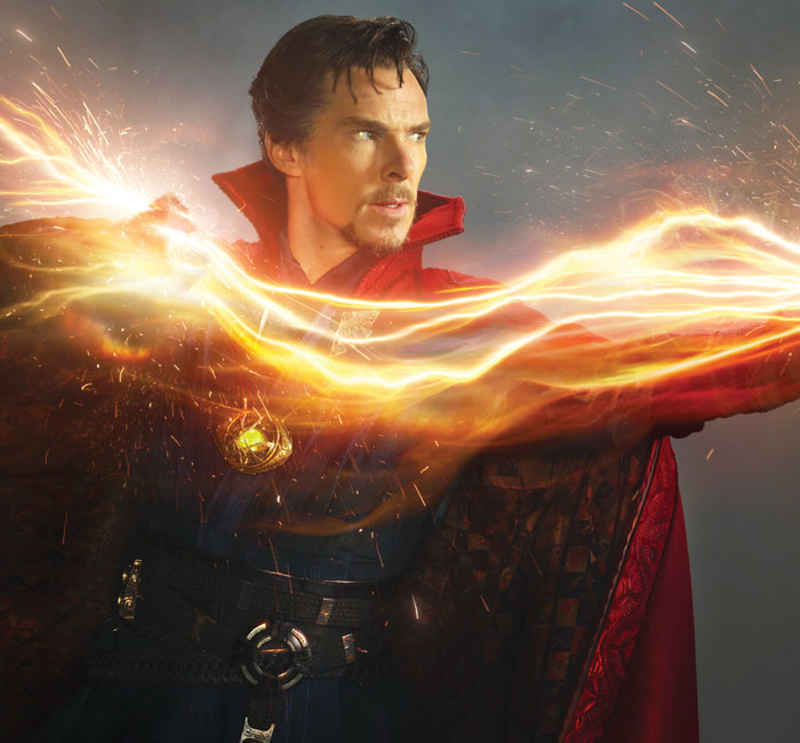Once upon a time, Comic-Con International: San Diego, as a brand, conjured up images of devoted geeks rifling through dusty crates of comic books in plastic protective sleeves as they debated the relative contrasting merits of their favorite superheroes.
The focus in the early days, which go all the way back to 1970, was not strictly limited to comic books. Science Fiction and film shared the spotlight, certainly in the hearts and minds of the faithful attendees.
As a film critic who makes what is now an annual pilgrimage to a major film festival, I can understand and appreciate the spirited fervor among those who pledge allegiance to Comic-Con, which held its most recent gathering in late July.
What those on the outside might not be as aware of is how Comic-Con, like the premiere film festivals in Sundance, Cannes and Toronto, has transitioned into a massive industry gathering.
While comic books continue to dominate the proceedings, film has become the emerging genre god on the scene, seeking to steal the thunder and lightening of the event. For all the workshops, educational programming, masquerade costume competitions, autograph areas and even the Will Eisner Comic Industry Awards presentation, the most talked-about draw outside the hallowed halls of the convention is the rollout of major Hollywood studio productions targeting this captive congregation of Pop art adherents.
Leading up to this year’s Comic-Con, the two industry giants seemed locked in an epic skirmish, offering up thematic mirror-image avatars in an effort to literally see which one could deliver a knockout punch. Marvel swung first, on the antihero front with Deadpool, the raucous R-rated fourth-wall-breaking adventure of their Merc with a Mouth, who dominated during the doldrums of February.
Things intensified when over the course of a couple of months DC released Batman v Superman: Dawn of Justice, which was followed by Marvel’s intra-hero feud Captain America: Civil War. The critical and box office verdict in this punch-out gave the decision to Marvel, but DC still had Suicide Squad, its antihero sucker punch in reserve (the scorecard is, again, not looking good on either the critical or ticket sales front).
With so much at stake, the unveiling of trailers at Comic-Con takes on an unimagined degree of significance. Marvel enjoyed the advantage of being able to tease Doctor Strange, a fall release, one-upping DC, which doesn’t have another movie in the chamber for this year. Its trailers look to the future, with the arrival of Wonder Woman, the first female superhero to command center stage in a solo adventure, and early footage of the DC team-up Justice League.
These two comic book rivals have laid out what amounts to a multi-year plan with several competing titles dotting the release landscape, promising — some would argue threatening — an epic onslaught of graphic mayhem.
In the song “The Future,” late Pop icon Prince offered up the lines, “Hollywood conjures images of the past/New world needs spirituality that will last.” Maybe he was onto something back in 1989.
At the time, the tune wasn’t merely another from his Paisley Park hit-factory production process. It was a specifically targeted creation, penned as part of his personal soundtrack to Tim Burton’s Batman, the first major studio superhero release, since the 1978 Richard Donner classic Superman and its 1980 sequel by Richard Lester. That double feature should have marked the real beginning of the superhero trend, but lackluster follow-ups stalled the franchisement of comic book gods and heroes.
But here was Prince, like some purple oracle, telling us, “I’ve seen the future and it will be/I’ve seen the future and it works.” One could argue that this future was all about the rise of the superhero.
That Batman, with Michael Keaton in the title role, faced its share of challenges from a core comic book fan base that couldn’t imagine the comedic actor as the grim dark knight of Gotham. Audiences wondered whether Burton’s gothic penchant would coalesce with the beloved graphic frames and just couldn’t overcome fears about past kitschy presentations of the character.
But the blueprint for the future did indeed work. Burton’s Batman spawned a sequel (Batman Returns in 1992) and, let’s be honest, a cottage industry with a host of other actors donning the cowl in live-action features — Val Kilmer, George Clooney, Christian Bale and now Ben Affleck — plus a plethora of animated adaptations and serialized works all over the stylistic and narrative map.
Why, you might ask? What is it about this Batman that makes him so special?
Well, to understand this hero and the future he has wrought, you have to look into our misty, mythic past to ascertain our seemingly urgent need for gods and heroes.
We have always found different ways of sharing our thoughts and fears — our stories in which we sought to define ourselves against the larger unknown backdrop of existence. It could be argued that this is what makes us quintessentially human.
Cat Power encapsulated the hubris of this notion in her song “The Greatest: “Once I wanted to be the greatest/No wind or waterfall could stall me.”
It is true — once upon a time, we did gaze up at the heavens with wonder and attempt to define its vast expanse. We felt the heat of the sun, the sweeping breezes (which we could not see) and a host of emotions that set us off — to appease self-interests, in pursuit of love, into conflict with others. At first, we found gods everywhere, in all of our ignorance. We labeled these sensations, crafted elaborate stories and, over time, retold these tales, expounding and expanding upon them, recreating the narratives and ultimately our own images.
This is when and where heroes were born, from cave drawings and paintings to epic poems passed down by griots to sacred texts to bedtime stories to comic books to big screen adaptations to streaming serials. We speak of scripted mythology, describing the norms and documented histories of the fictional and virtual worlds we’ve called into existence.
We rally around the tagline — a hero will rise — but that figure has evolved. He’s no longer a mere man. To be the greatest, he has to be more. He has to be super, which means he’s rushing ever close to being a god. But what happens when our “gods” are no longer gods at all?
It is time to face the future, which rises and falls every weekend upon the box office receipts. Burton’s Batman was a summer release, a hit that formulated the notion of the tentpole — a major seasonal event picture that could dominate screens for weeks at a time, force other titles to bow before its glory and re-establish or re-shape the Hollywood firmament.
Who needs gods anymore when you can have stars?
Along came the Marvel Cinematic Universe, picking up the mantle abandoned by DC Comics, which had been unable to successfully elevate its fallen cinematic Superman or build upon its Dark Knight iteration of the Batman. Marvel seized the opportunity to unify its core heroes to re-create The Avengers for the screen. Iron Man was a longtime role player in the comic book stable until Robert Downey, Jr. gave him a smirkingly marketable face. Suddenly the character was full of swagger and social media credibility. A star was born.
But the powers-that-be made the decision early on to downgrade their resident deity Thor (Chris Hemsworth), the Norse God of Thunder. You can’t have a god, the logic went, in a world of advanced technology. This is the world of tomorrow, so Thor and his heavenly home of Asgard — and the whole of the nine realms — became a place of science populated by aliens with long lifespans.
The rationale divorces us from our past, rendering the extraordinary something far less worthy of our devotion.
And once you start mucking about with gods, magic must be redefined as well. The soon-to-be released Doctor Strange (Nov. 4), based on the trailer from Comic-Con, strips away the trippy psychedelics of the character’s origin.
We hear The Ancient One (the almost too perfectly cast Oscar winner Tilda Swinton) lecturing the would-be mystic warrior (everybody’s favorite Sherlock Benedict Cumberbatch): “You think you know how the world works.”
But the line addresses us too, and it informs us that what passes for magic today is a dream world folding in on itself — a la Christopher Nolan’s Inception — albeit with an even more diverse cast (featuring race-bent performances from the aforementioned Swinton to Chiwetel Ejiofor as eternal Doctor Strange antagonist Baron Mordo).
Chocolate Genius, in his downbeat anthem “Chasing Strange,” dared to speak of “The liquid daughters and their liquid sons/They disappear in thin air/Every single breath and every single sigh/Is holier than it needs to be/When I am chasing strange/And I will rearrange/To be a part/Of every change that you make.”
That’s what I want to hear when you invoke the name of Doctor Strange or speak of magic. There have always been rules to these kinds of things, but now there is an overarching adherence to logic or order being imposed on our sensibilities. We know more than previous generations. We have conquered the notion of our complete ignorance, mastering science, bending logic to our collective wills.
What is there left to fear, to truly be in awe of?
Maybe there’s hope on the horizon, though. Comic-Con, remember, does not exclusively limit itself to comic books, so the film studio teasers boldly span the genre-map as well. The Harry Potter-spinoff Fantastic Beasts and Where to Find Them (Nov. 18) from director David Yates (more than familiar with the Potter-verse, having helmed the final four installments in the franchise run) and author J.K. Rowling (taking on the task of adapting her own work), dips into an old-school bag of magic tricks, weaving an alternative America that is both surreal and recognizable with an Academy Award winner front and center (Eddie Redmayne).
Hero worship, when it works, traffics in folklore, the telling of tales that spring from somewhere close to what defines us, and it should be no different with our superheroes.
For all the doom and gloom of Zack Snyder’s Man of Steel and Batman v Superman: Dawn of Justice, it seems as if he might have finally stumbled, albeit blindly, upon a way to employ the foreboding to advance the narrative and engage us on some deeper level. The Comic-Con Justice League (Nov. 17, 2017) trailer introduces an element of folklore into the mix.
Bruce Wayne (Ben Affleck), off camera, speaks to a bar full of downtrodden but proud folk, telling the familiar tale of a man from the sea who brings fish to feed them at a time of great need. “He comes on the King Tide,” Wayne says. And with that, a broad shouldered figure turns to face him — Arthur Curry/Aquaman (Jason Momoa) — and beckons him to continue.
There is discussion of an enemy coming and the need to unite. Even with the modern musical elements accentuating the proceedings, the scenes are steeped in the mythic drawing of power and calls to arms.
Where has this been in all of the other outings, DC? We’ve been looking and waiting for warriors, and thus far you’ve given us video game skirmishes.
Speaking of video games, the Wonder Woman (June 2, 2017) trailer, which is full of ancient slow motion backed by wordless chorales and battle scenes that toggle between the earnest feel of soldiers in the trenches and the whip-smart action choreography of thoroughly modern frames, wears the same well-worn CGI effects. But underneath the costume garb, it feels like this Patty Jenkins adventure will have the heart of a champion from the days of yore.
Could it be because Diana Prince/Wonder Woman (Gal Gadot) descends directly from the Amazonian realm, with a father who was a god, and there is no attempt to distance her origin from mythic roots? Better still, maybe it is because we get to watch in wonder as she interacts for the first time with the world of Man, and there is none of the contemporary ironic winking at the cultural clash? I would say that certainly makes up for the expected lapses into 300-styled hijinks.
Let’s go back to the future once more, the one not seen at Comic-Con, but already on the horizon, where the heroes are something more than the mythological super friends we’ve become accustomed to.
Prior to Comic-Con, teasers alerted those in the know of director Justin Kurzel’s follow-up with his Macbeth star Michael Fassbender, a splashy entrance into gamescape that is Assassin’s Creed (Dec. 21). Fassbender’s protagonist discovers that he’s part of a secret line of master assassins that extends throughout history.
Could it be that with the fall of the gods, the stars might now be forced to roam this new frontier to find worthy avatars? If so, then this must bode well for the anticipated reboot of the Tomb Raider franchise, toplined by newly minted Academy Award-winner Alicia Vikander as the adventure-seeking Lara Croft. With a March 16, 2018 release date already locked in, the Comic-Con flock already has a miraculous revelation to look forward to in 2017.
The next gen awaits. ©

